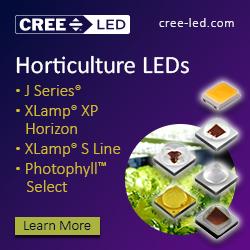Are Crop-Spraying Drones the Wave of the Future?
Using Minichromosomal Technology in Agriculture
Agriculture Manufacturing Trends to Watch
Weather Forecasting for the Farmer
Utilizing Tissue Culture to Produce High-quality Cannabis Clones
Will Closed Ecological Systems Save the Planet?
Photosynthetically Efficient Colors for Crop Growth and Biomass Accumulation
Indoor Farming with Towers
Vertical Farming Methods Compared to Traditional Vertical Farming?
Genetic Engineering is a Driving Force for Modern Agriculture
Universal Automation in Agriculture
Food Matters Summit - Q&A with SPREAD
Automated Commercial Containers for Cannabis Cultivation
Semi-artificial Photosynthesis
Automation and Sensors in Hybrid Greenhouses
Records 76 to 90 of 94
First | Previous | Next | Last
Featured Product

